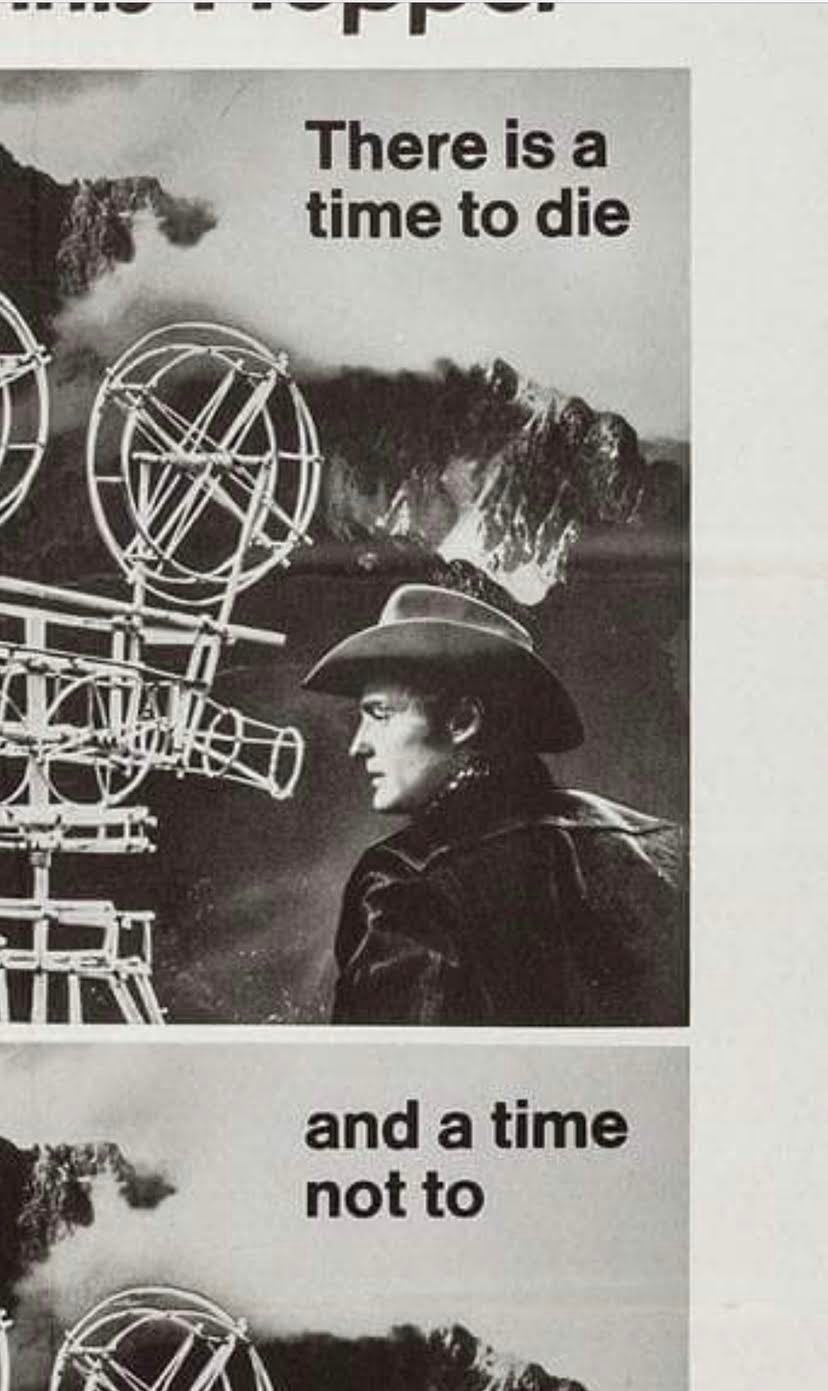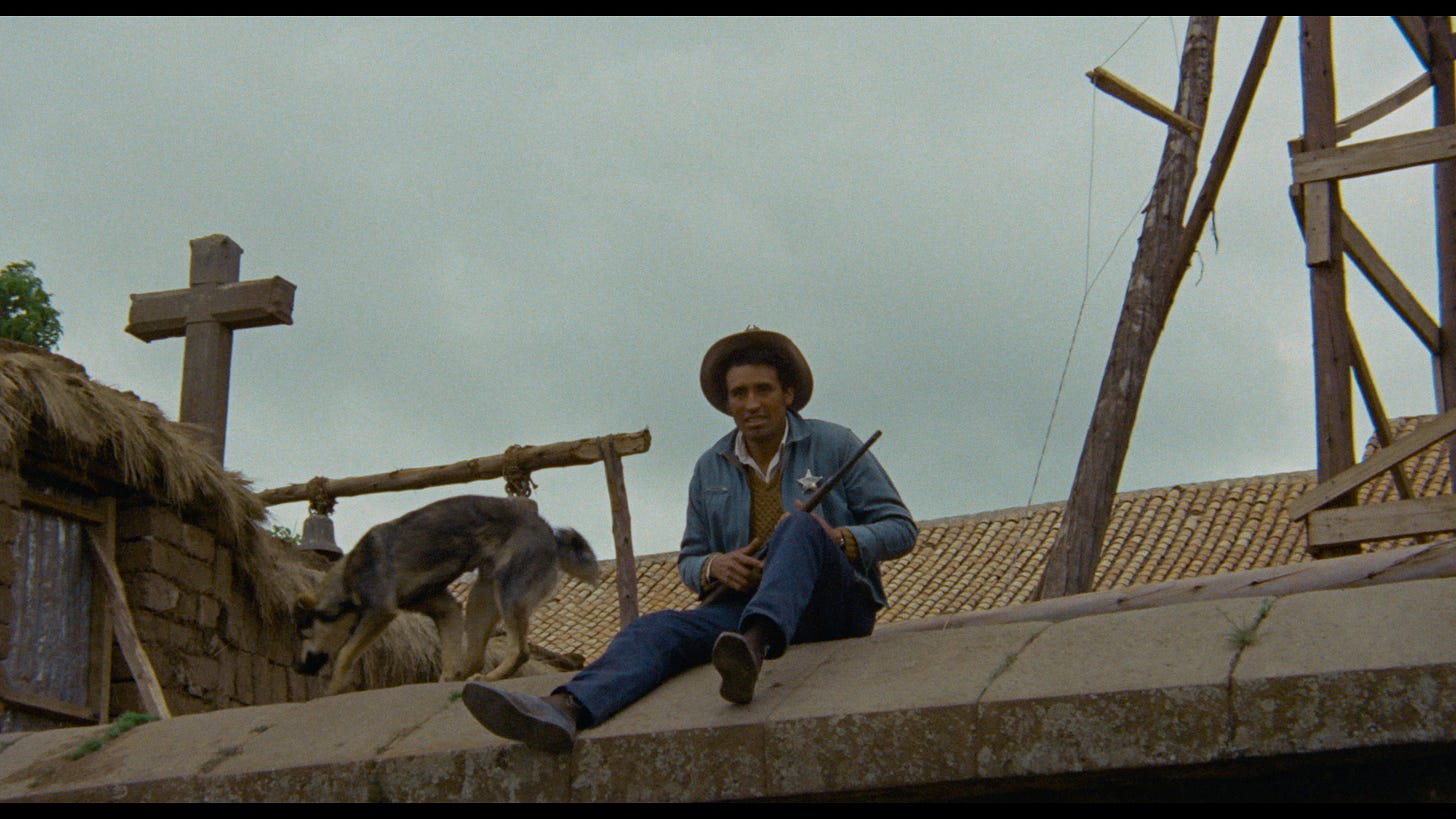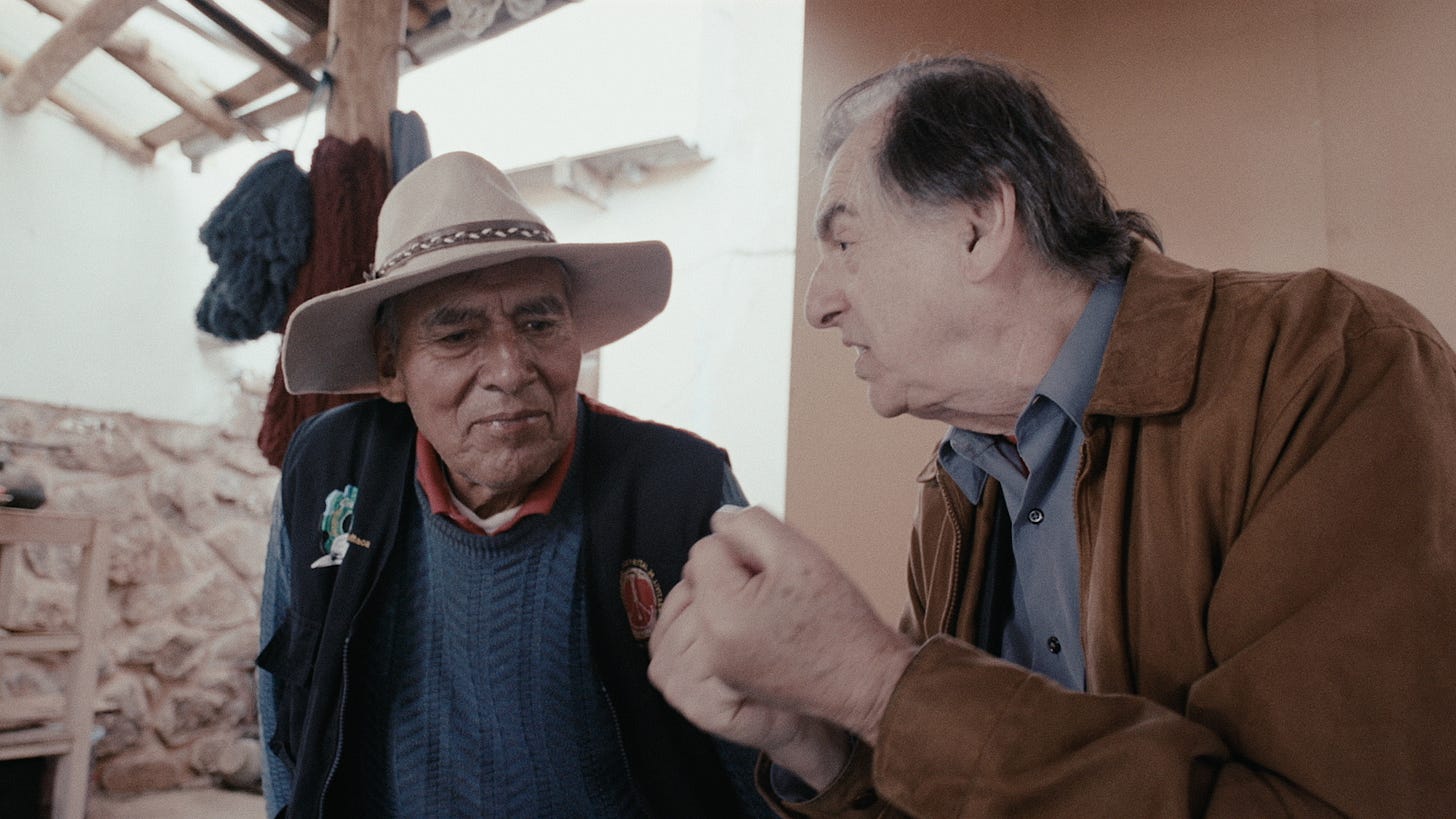THERE IS A TIME TO DIE AND A TIME NOT TO (part one)
Walking Down the Incan Highway With Hopper's Last Movie Guide & A Club Sandwich Where Helmut Newton Checked Out
In 2016, I traveled to Peru to shoot the ending of the film I was making called Along for the Ride, which dealt with the production of Dennis Hopper’s directorial followup to Easy Rider, entitled The Last Movie, his war with Universal Pictures, and his subsequent Hollywood blacklisting that followed. Amidst the power struggle between Hopper and Universal, the film was unceremoniously trashed by the studio after winning Cidalc at the Venice Film Festival in 1971.
I was accompanied by the remaining two die-hard crew members still standing after 16 months of production, along with Hopper’s longtime right-hand man Satya de la Manitou, whose eyes the story is seen through. By this point, we were a motley bunch, pulling double and triple duty to get the film in the can. Running on the final fumes of the budget and whatever credit cards and airline miles we had left between us to hit our premiere in Venice. The journey ahead was a destination on a map high in the Peruvian Andes. Specifically, a remote village called Chinchero, where the bulk of The Last Movie was shot from 1969, bleeding into 1970.
I had very little else to go on when we boarded our flight at LAX and headed to South America without a plan. I’d elected to wing it. A Hail Mary pass for my ending in a foreign village I had only ever seen in Hopper’s film.
The first entry from My 2016 Peru Journal;
Day 1
We landed at Cusco Airport on Latam Air. There’s a cartoon parrot painted on the fuselage of our plane. Primarily, an international set of college Dave Mathew’s hippies who hacky sack were aboard looking for enlightenment atop Machu Picchu and from Ayahuasca psych guide rip-off artists. We’re in the minority, along with the Peruvians heading home and the odd American businessman.
I’m the only passenger on our flight singled out and searched by customs coming into the country. The crew waited patiently on the other side as the entire contents of my bags were inspected. There’s no fucking around up here in the Cusco. I thought the square short haircut I got in L.A. would cancel anything like this, but it didn’t. I guess I match the profile of an American drug runner. I probably should have also shaved before leaving L.A.
Earlier, Satya got his dose when we had changed planes in Lima en route to the hellish turbulent runway on the side of a mountain. Authorities confiscated Satya’s tie clip as it resembled a Persian shamshir blade, and from what I gather from the language barrier, they felt it could be used as a pocket-size version that could end someone’s life. It's the same antics that go on with the TSA stateside. His tie clip was tossed in a giant lucite box with hundreds of lighters and pocket knives to make some evolving warning installation for weary travelers. He told the guard, wearing mirrored aviators, that he’d return for it on the way back through Lima. Machine guns and drug-sniffing beagles are plentiful.
In my hotel room in Cusco, I sat in the stone shower as the water poured over my head for thirty minutes. I could not stand up as I tried to acclimate to the altitude while gritting coco leaves between my teeth.
We’re all worn out from the getting here.
Onwards, tomorrow to Chinchero. It’s way higher than here. The air is thinner.
One Question - How did they do it in 69-70 with all those Marlboros, Pisco, Joints, & Cocaine?
It’s almost seven years later, and I’m nearly recovered from the long journey set into motion by deciding to make a film about all of this. I’m sitting at a table near the outside bar at The Chateau Marmont. It is well known for many things but is sometimes recognized as where photographer Helmut Newton, one of my earliest photo heroes, exited his existence. I paid my respects to where his Cadillac hit the wall during his fatal heart attack and quietly crossed myself before climbing the stairs a few minutes before sitting down with everyone. There’s a small group that has been brought together with other like-minded individuals by my friend Winter. Winter is the kind of authentic Angelino with the foresight of connection, something I’ve learned that Hopper also had a unique talent for. Winter’s husband, Fred Hoffman, exhibited Dennis’ paintings in his L.A. gallery in the late 80s and beyond.
Unbeknownst to me, I’ve been strategically seated by her next to writer Hunter Drojojowska-Philp, author of Rebels in Paradise. She’s responsible for the handbook on the L.A. art scene to emerge from the Ferus Gallery. Aka, the group of misfit punks from the 1950s with names like Ruscha, Altoon, Bankston, Blum, Dwan, & Hopps. This is the crew I learned to look to for the answers when faced with a dilemma in creatively navigating my unrelenting hometown. A North Star for taking that other road in L.A. that most people don’t try to know about.
Eventually, Hunter and I suss each other’s common ground as my club sandwich arrives. Rebels in Paradise is a helluva book, and I bow in respect behind my sunglasses before taking a sip of Decaf. With as many high points as I’ve had on this continuing journey from filmmaking into preservation with Dennis’ family and close friends, there has been a menagerie of unsavory characters right out of Hopper’s favorite film, The Treasure of the Sierra Madre. But maybe picture it to the tenth power with spooky CGI characters added. Throw in some of Lynch’s Dune villains, Marfa worshipping Wiccans, and Taos 70’s inspired Acid Larpers all stomping around in Huston’s cautionary masterpiece penned by the enigmatic B. Traven and you’ll get a feel for what I’ve been through. So, I appreciate our conversation about the artistry revolving around this story. This is a crucial point often missed when discussing New Hollywood’s golden biker turned crucified cowboy.
Along the way, I’ve sometimes thought of Barry Newman’s Kowalski speeding towards the giant orange-yellow bulldozers blocking the two-lane highway escorted by a gang of gum-chewing, trigger-happy backwater hick cops. A blind DJ named Super Soul, played by Cleavon Little, in one of the best performances of the seventies, providing the soundtrack over the AMFM waves to guide Kowalski over the county line and get that Challenger where it needs to go.
I got the rockin', rollin', reelin', feelin'
A French Vanishing Point poster hangs in my studio as a reminder to keep moving. Kowalski’s glazed look on his face as he shifts into high gear, always there.
Excerpts from the second entry from My 2016 Peru Journal;
Day 2
We take the long, winding journey into the mountains away from the congestion of Cusco. There were a noticeable amount of beautiful Peruvian female motorcycle cops directing traffic as we left the city that otherwise felt like the Spanish were still here colonizing at the expense of the people we were going to visit. Dogs ran wild as we left the shanties on the outskirts behind.
I bought a woven llama bracelet from an old woman outside the hotel.
Our driver and translator roll in a van like T.C.’s from Magnum P.I. I asked if we could listen to music en route. They decline. We move in conversation and chew our altitude pills.
After a few hours, we made it to Chinchero. We walked around in disbelief for a few minutes. This is the place, and I imagine by the looks of things that not much had changed. We grabbed our gear and walked into the first village shop, searching for the ponchos and blankets like the ones worn so prominently by the local cast in The Last Movie.
I had been looking for answers, and I found the key in the first shop we entered. I met Hopper’s guide and village point man Tomas almost as if guided there.
And I knew exactly who he was even though he’s gone down the road a piece since then. In the final minutes of The Last Movie, Tomas brings us to the film's ending, which had caused all the problems between Dennis and the studio suits at Universal. Hopper’s character, Kansas, stands up after dying, then does it again. This very symbolic ending wasn’t what the suits at the studio wanted. They insisted upon his death. Demanding Hopper’s rise eradicated from the final prints. He refused. Holding to his vision. He had Final Cut, after all.
Tomas looks over and says, “Denny Hooper,” while reshaping his hat to match Hopper’s trademark Stetson from the film.
Excerpt from Rebels in Paradise by Hunter Drohojowska-Philp;
“Hopper, predisposed to being the life of the party, recalled “I stole the sign that said ‘Hotel Green’ with a finger pointing. When I saw it, I recognized that it’s the same shaped finger as from Duchamp’s painting Tu M’. I got some wire cutters and went to get it. He signed the finger with ‘Marcel Duchamp, Pasadena, 1963.’ So Hopper and Hopps made the last ready-made!”
Referenced Music - Segarini and Bishop’s Over Me from the Vanishing Point Motion Picture Soundtrack.
Photos credits - Along for the Ride, The Last Movie, Nick Ebeling, Danny Reams, The Venice Film Festival, Dennis Stock, Peter Sorel, and Laszlo Kovacs.














